
In our previous growing guide, we talked about how begonias can brighten up your garden with their colorful long-lasting blooms and stunning foliage patterns. But begonias can be equally happy as houseplants and can be grown indoors year-round.
The trick to growing begonias as houseplants lies in which variety you’ll choose. Here are my recommendations (from easy to hard) to set you up for success.
What begonias can I grow as houseplants?
If this were a video game about begonias, you could choose four levels of difficulty:
Easy mode: rhizomatous begonias and semperflorens (wax) begonias are relatively easy to grow indoors, even for newbie plant parents.
Intermediate mode: rex begonias can be grown indoors provided they get enough humidity (more on that below)
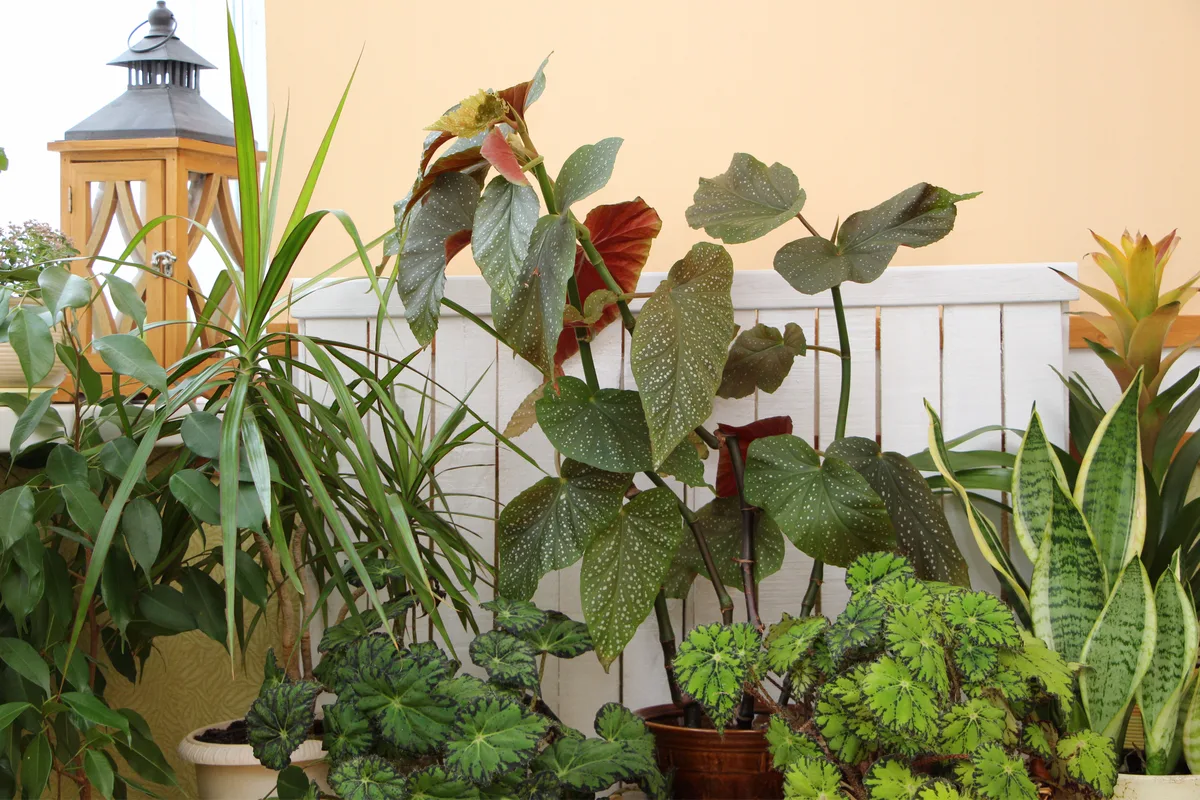
Hard mode: cane begonias, such as the Insta-popular ‘Angel wing’ begonia, are a bit of a challenge if you’re new to growing houseplants.
Do not attempt: tuberous begonias don’t do well in indoor containers because they need a good amount of light and very good drainage. The bulbs are also prone to rotting due to overwatering in an indoor setting. However, you can start tuberous begonias indoors, just to get ahead of the gardening season, especially if you’re in a climate with short summers. But you should eventually transplant them in the garden.
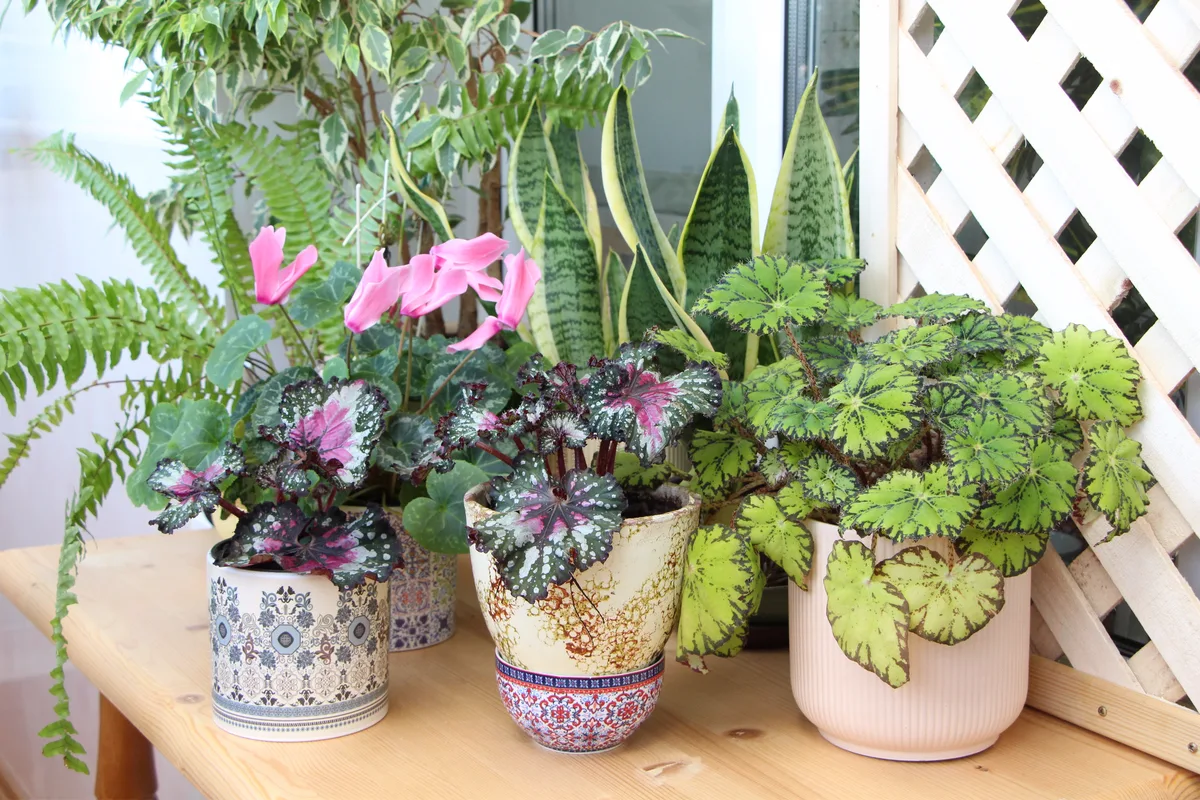
How do I know what kind of begonia I have?
I wrote about the different types of begonias in this guide. If you’re buying a begonia from a plant nursery, this information should also come on the grower’s label.
My advice is to try to play the game in easy mode first. There are so many beautiful wax begonias and rex begonias to choose from to boost your confidence. You can always level up, of course, but you might just want to avoid the frustration. Whether you’re successful or not will also depend on factors outside your control, such as what kind of light and humidity you’re getting indoors.
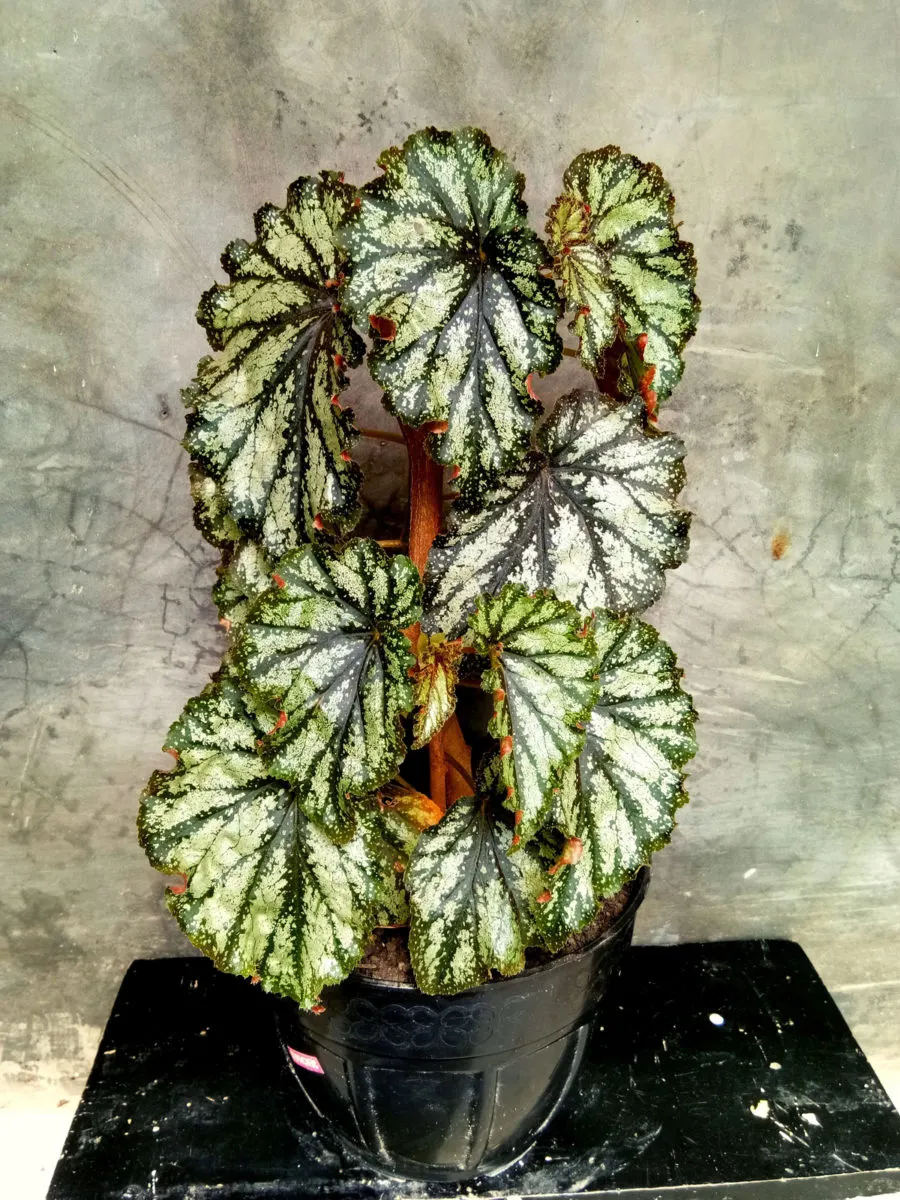
Here’s how to keep your begonia houseplant happy.
What kind of soil do begonia houseplants like?
One of the advantages of growing begonias as houseplants is being able to control the kind of soil they’re planted in. Begonias prefer loose well-draining soil. I know, well-draining is easy to say but often hard to achieve. The trick is adding elements such as vermiculite, perlite or sphagnum peat to the soil (about 10 to 20 percent of the mix, depending on the size of the plant and that of the container) to help you achieve porous soil.
One of the most important things to watch out for is water retention in the soil. Make sure the soil doesn’t become waterlogged and don’t allow your begonia’s roots to be smothered in water. So never plant your begonia in a container without drainage holes all around and avoid pots with just one drainage hole in the middle.
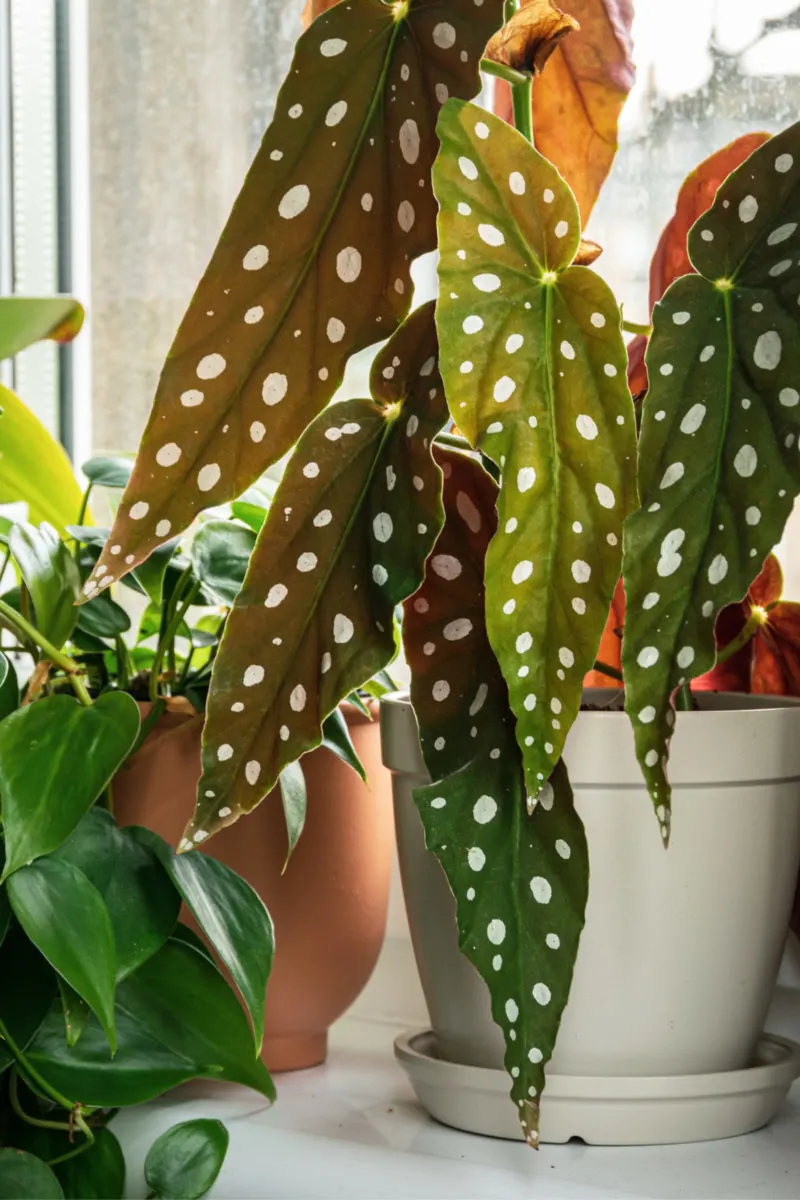
When planted in containers, it’s important to keep the soil well-aerated. In the garden, worms and microorganisms take care of the aeration, but for the pots indoors, the soil tends to get compacted. When this happens, the air pockets in the soil disappear, thus leaving the plant “starved for air.” The roots of the begonia plant need easy access to oxygen, so aerate the soil every month to dislodge clumps and prevent compaction.
Aerating your begonia’s soil isn’t as complicated as it sounds and you don’t need any special equipment to do it. Just gently insert a chopstick on the surface of the soil every 1-2 inches and loosen up the soil. Avoid using sharp items such as knives or skewers that might damage the root structure.
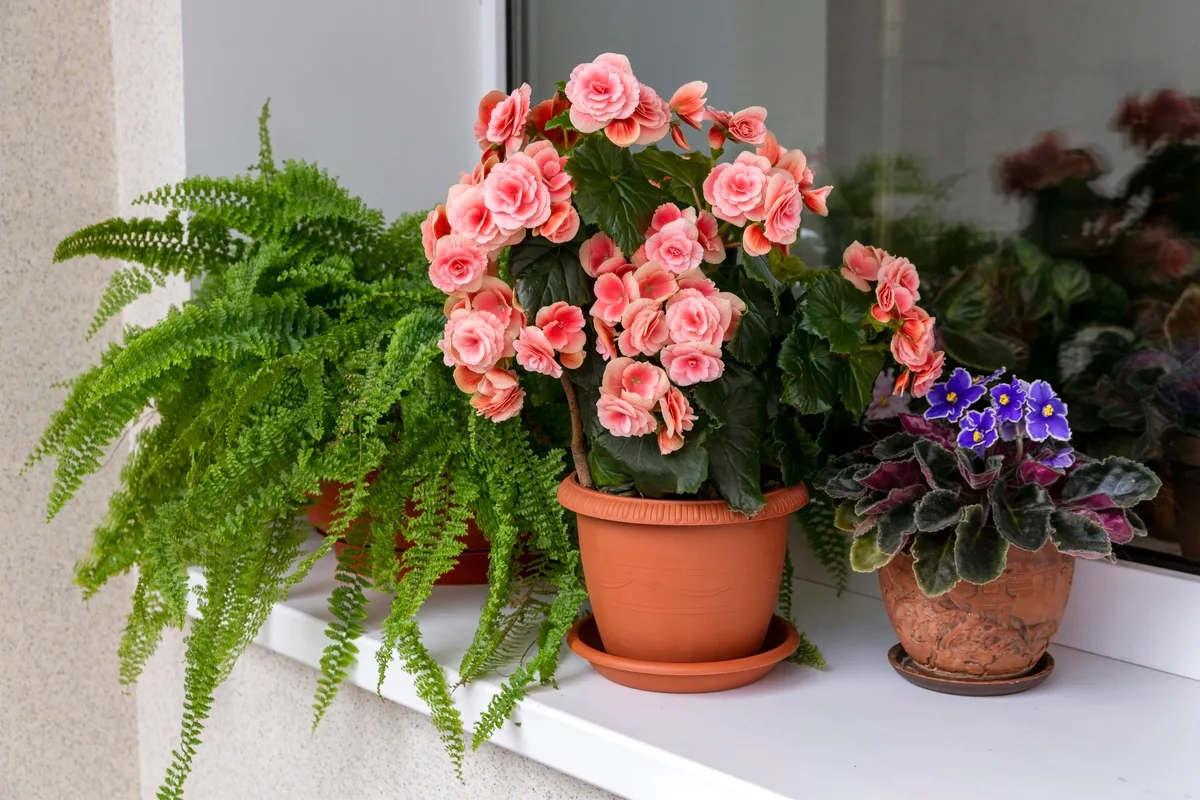
How often should I water my indoor begonia?
Watering a potted begonia is truly a balancing act because this plant loves moisture, but hates being waterlogged. In fact, the easiest way to kill a begonia is by overwatering it. Begonia retains a lot of water in its stems and waxy leaves, but it also puts a lot of energy into flowering and quick propagation. The tubers and canes of some begonia plants act as small water reservoirs, but it’s these same parts that can rot easily when faced with too much water.
How can you tell that your begonia needs to be watered? Easy, when it’s dry not only across the surface of the soil, but also about two inches deep. You can use a chopstick or your finger to test the moisture level. If the soil is still dry two inches below the surface, then it’s time for a watering session.
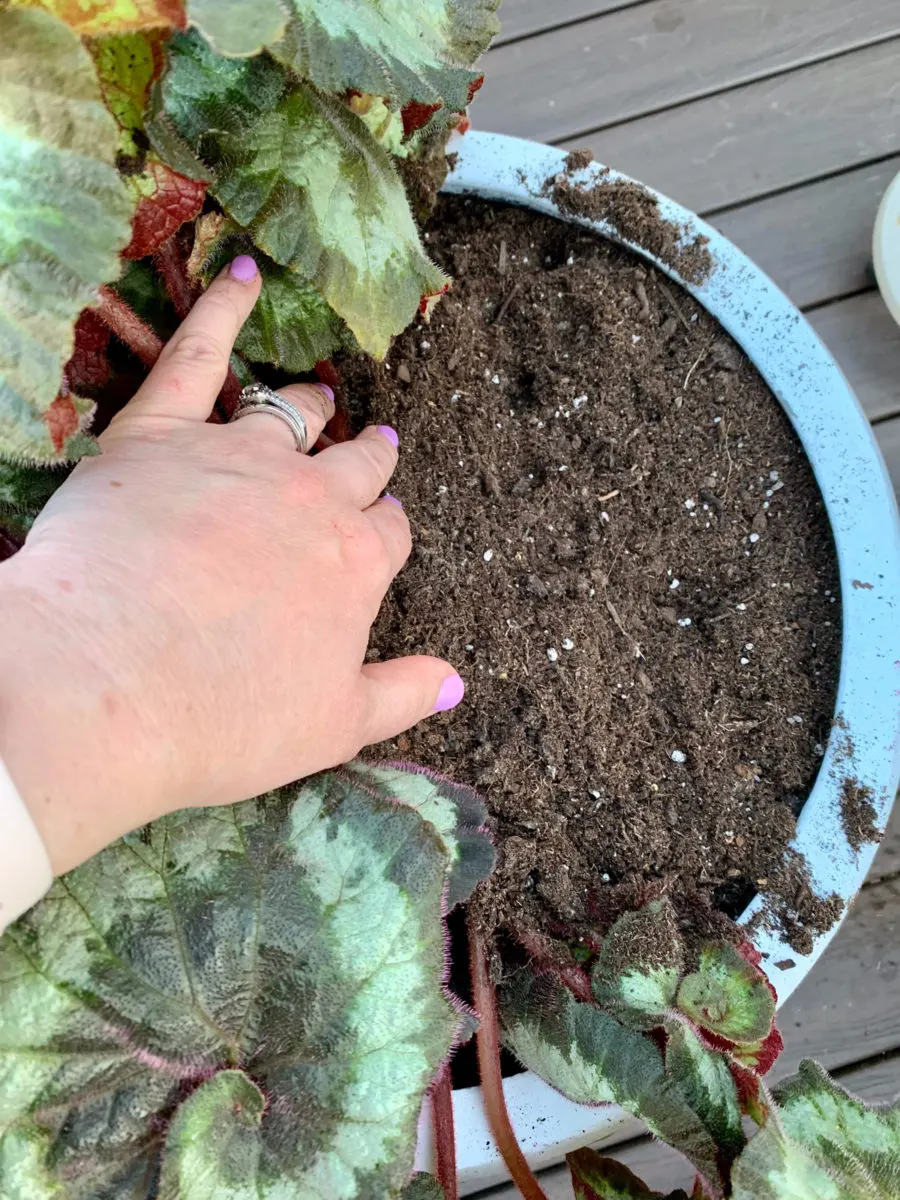
Give your begonia a good even soak until the water runs out of the bottom of the pot. Then let all the excess water drain out. Don’t forget to also dispose of the water that has been collecting in the tray or saucer below the pot.
Another good tip for watering begonias is to avoid getting the foliage wet. Not only will tap water leave unsightly spots on the leaves, but it may also contribute to powdery mildew.
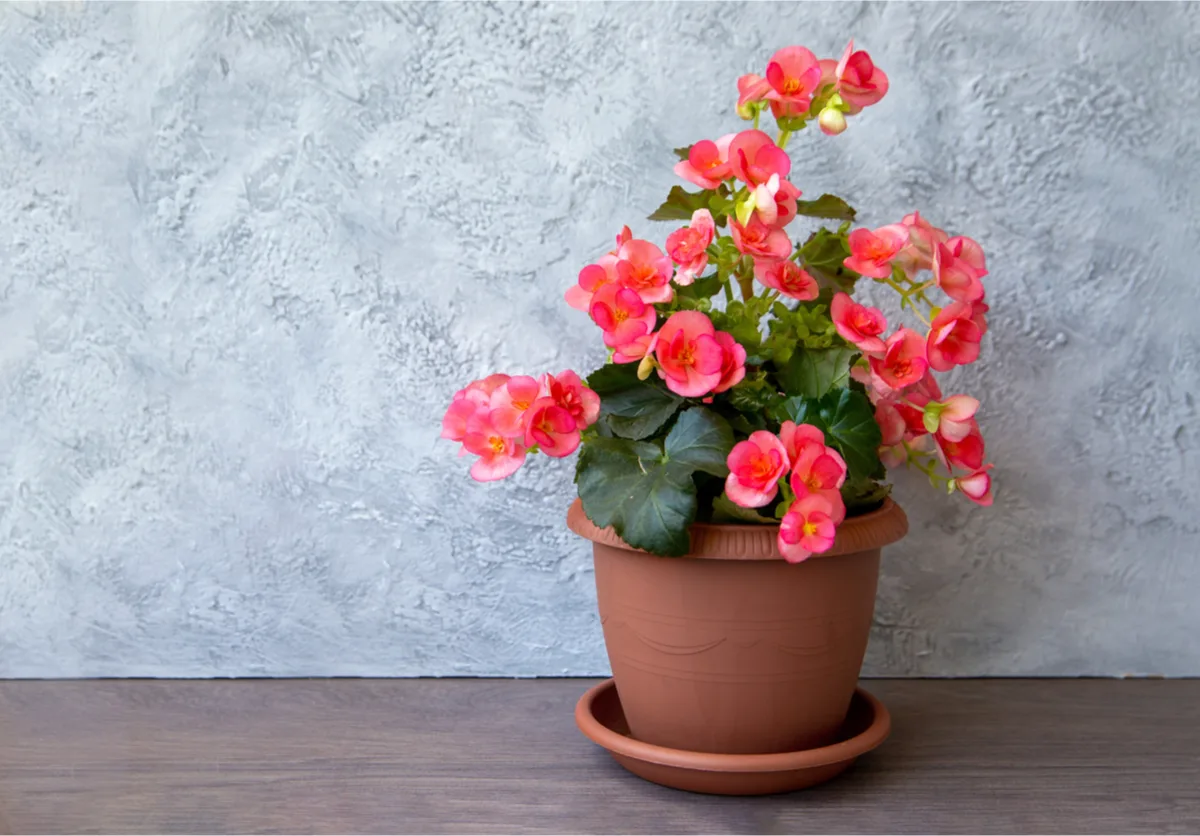
What kind of light do begonias need?
Light is a crucial source of energy for your begonia, but there is such a thing as too much of a good thing. When grown in the garden, begonias are considered shade plants, so it’s no wonder they have the same requirements indoors too.
Begonias prefer bright indirect light (where bright refers to the intensity of the light and indirect refers to the duration). In most indoor spaces, at least in the Northern hemisphere, the best spot for bright indirect light is in front of west-facing and east-facing windows, and a couple of feet back from south-facing windows.
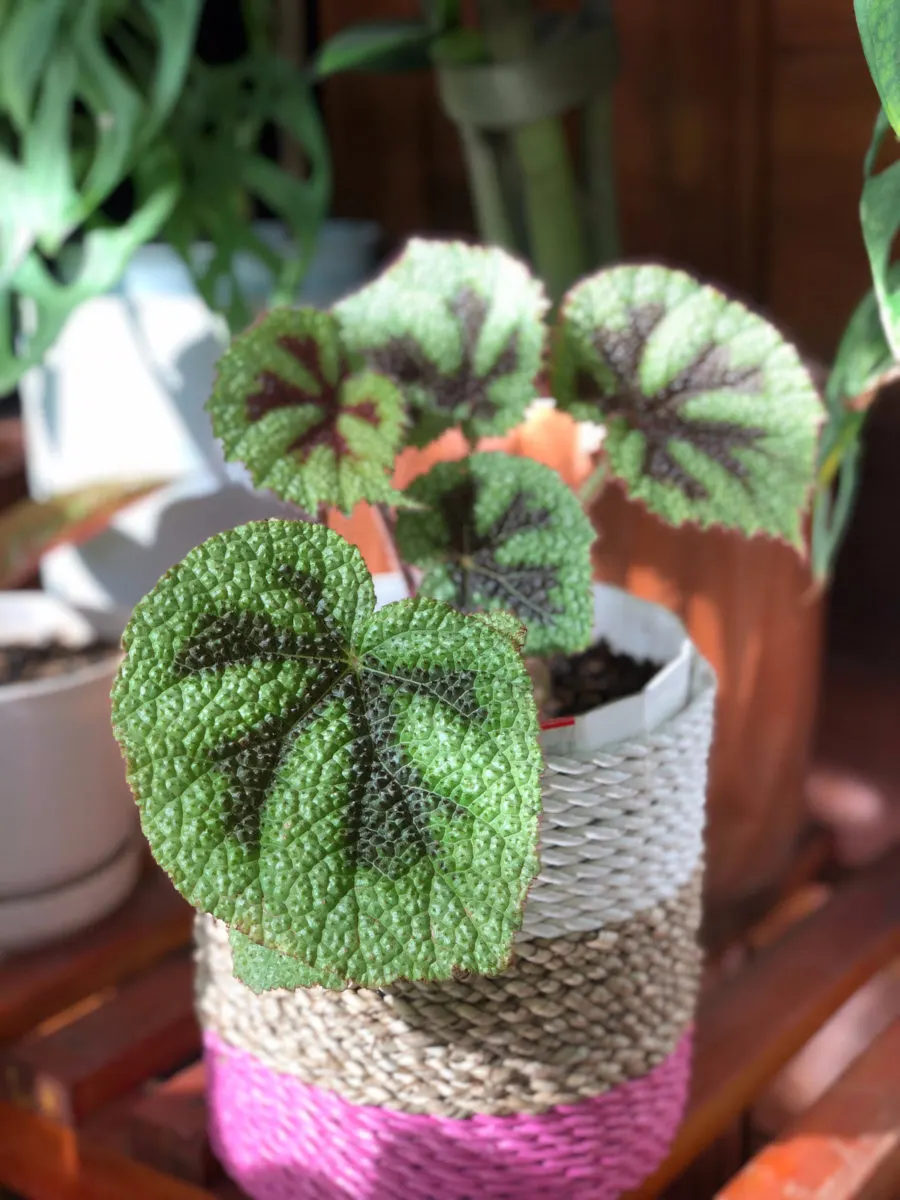
Here’s an easy way to check the light in your environment: place your hand about three inches away from the wall near the source of light where you would place your begonia. If your hand casts a soft shadow, that means the spot gets bright indirect light. On the other hand, if the shadow is dark and well-defined, the light you’re getting is too direct and may be too intense for this plant.
A begonia that’s getting too much light will show signs of bleached and dry leaves. In a worst-case scenario, the leaves may even become brittle and dry out. If this happens, move the plant further away from the light source. This should fix the problem for the new leaves, but unfortunately there’s no way to fix the leaves that have already been bleached. You can either remove these unsightly leaves or wait until the plant eventually sheds them.
Do begonias need high humidity?
There isn’t much we can control about air humidity when we grow begonias in the garden. However, it’s a different story when we grow begonias as houseplants.
Begonias like a humid environment (about forty percent humidity) and some begonias can only be grown in greenhouses. Always check the grower’s label before you purchase a begonia you intend to keep as a houseplant.
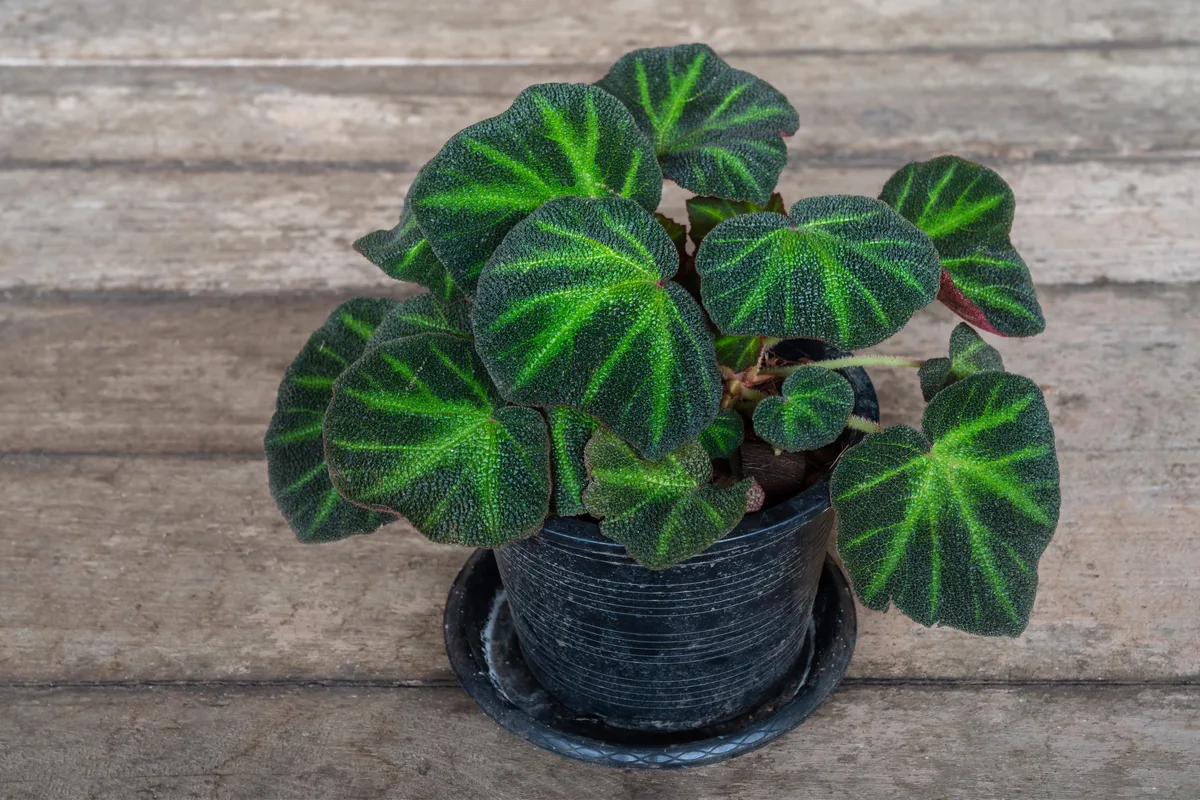
The paradox, however, is that begonias don’t like to have wet leaves. Begonias are highly susceptible to powdery mildew, so avoid the temptation to mist them.
The best way to increase humidity for this plant is to place it in areas that are naturally more humid, such as the kitchen or the bathroom. Another good way is by placing it on a pebble tray that you have filled with water. The pebbles (or marbles) form a barrier between the roots and the water while also making the air around the plant more humid as the water evaporates.
Throughout winter, you should avoid placing your begonias near radiators and heat vents. In the summer, don’t place it in direct draughts or next to fans or air conditioners.
What kind of pot should I get for my begonia?
The answer to this question depends on the size of your plant and on your plant care tendencies. If you know you’re a serial overwaterer and can’t help yourself from dumping a bit of water in the pot at the first sign of thirst, then it’s best to choose a terracotta pot.
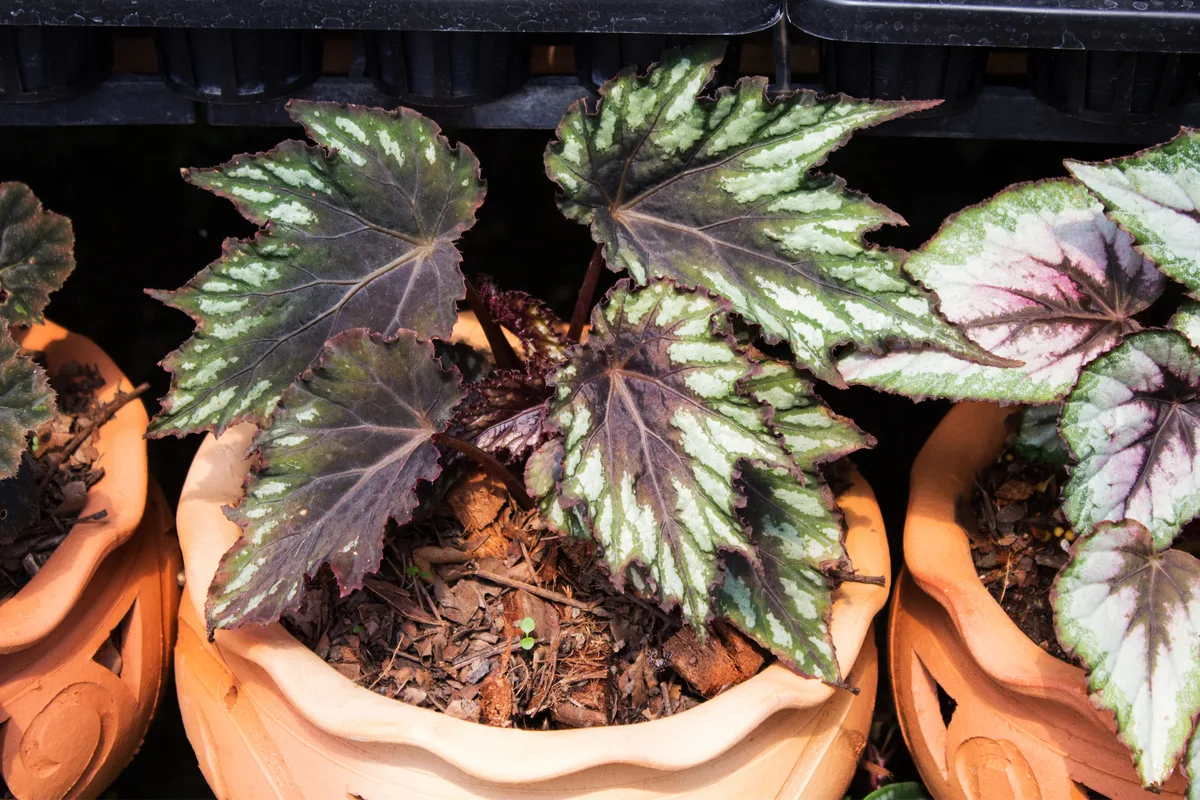
The porous terracotta will allow the excess water to evaporate and (generally) keep your plant out of trouble. The thickness of terracotta pots also protects the roots from rapid changes in temperature and allows for better soil aeration.
However, keep in mind that begonias are thirsty houseplants, so the advantages of terracotta might backfire if you lean more towards underwatering.
Ceramic pots are the best choice in this case. The glaze on ceramic pots helps keep the moisture in the soil longer, so even though it may look like a terracotta pot on the inside, it doesn’t allow fast water evaporation. Some ceramic pots come without any drainage holes, so make sure you use these only as decorative pots to hold plastic cache pots that have proper drainage.
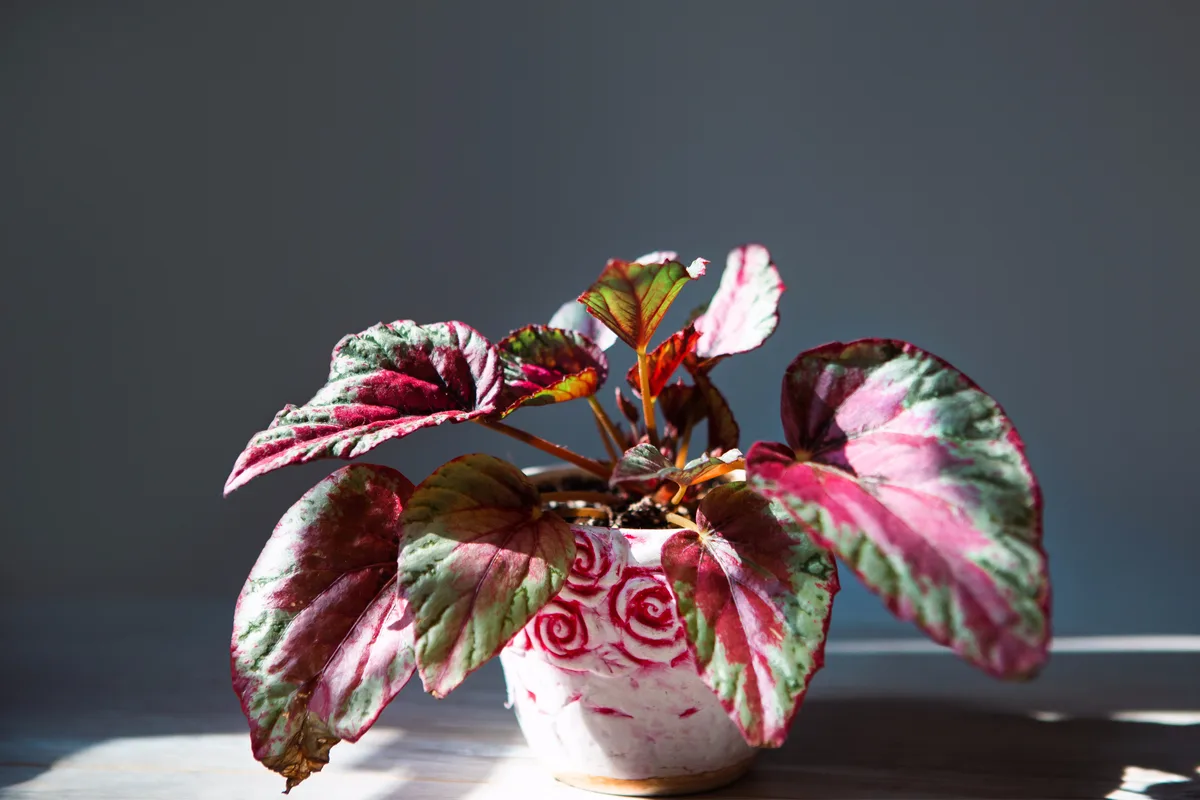
Speaking of plastic pots, they’re always a good choice for moisture-loving plants. They’re lightweight and hard to break and they come in different colors, so it’s easy to find something that matches your home decor. All store-bought plants come in plastic pots, so you’re more likely to already have a stash of pots ready for repotting your begonia.
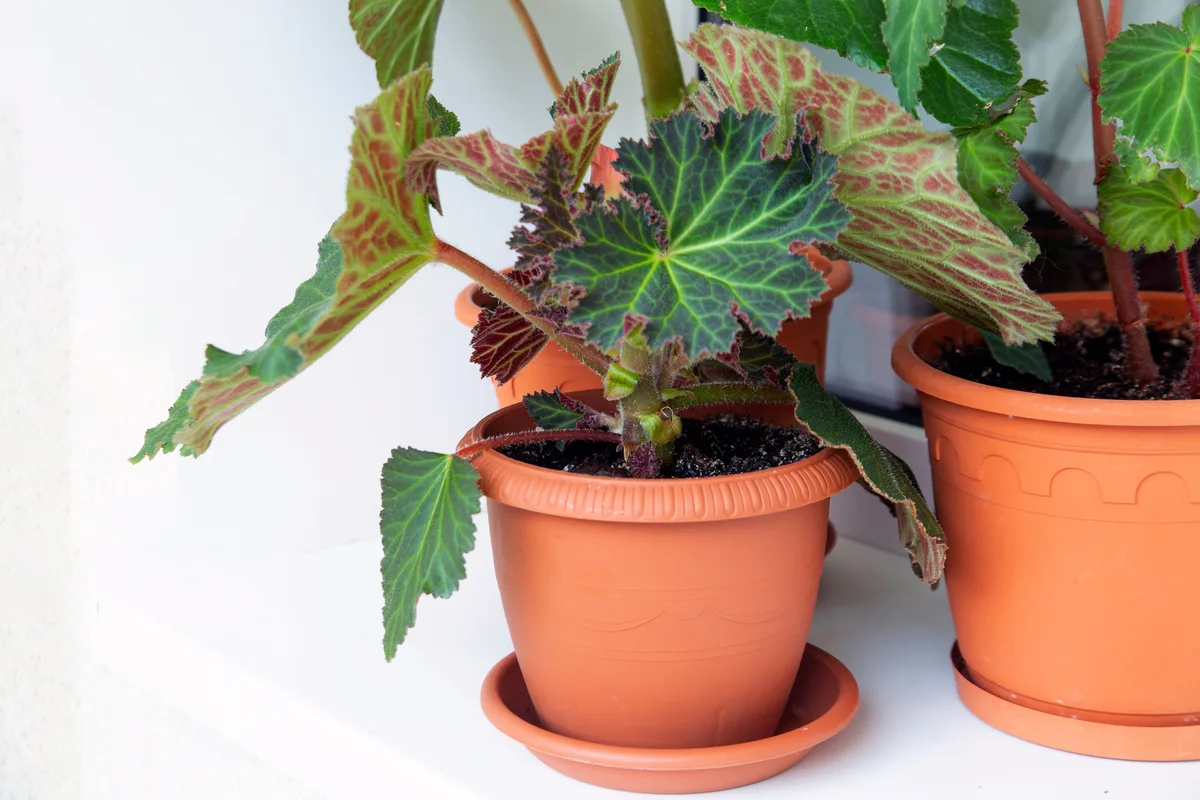
No matter what type of pot you choose for your indoor begonia, the drainage holes are non-negotiable.
When should I repot my indoor begonia?
If you think your begonia has outgrown its current home, then it might be time for an upgrade. A few signs of a begonia that needs repotting include having roots poking out of the drainage holes, having to water more often than usual and dealing with extremely compacted soil.
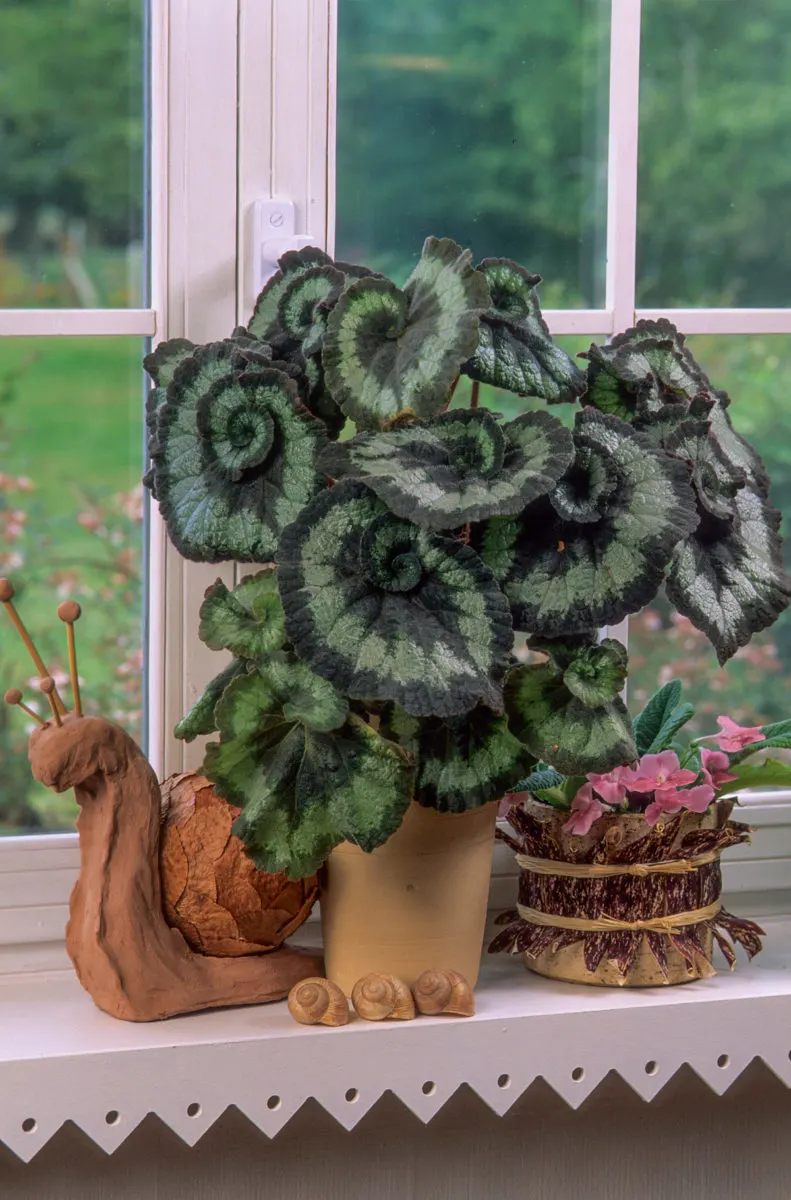
When you upsize your begonia’s pot, make sure you choose a container that’s roughly two inches larger in diameter than the one you’re replacing. You want the plant to have enough room to grow without having to deal with an excess of moist soil. Slow incremental size increases are the key to proper pot upsizing.
Waiting to repot until spring or summer, when the plant is in its most vigorous state, will allow your begonia to recover and adapt to its new abode without too much disruption.
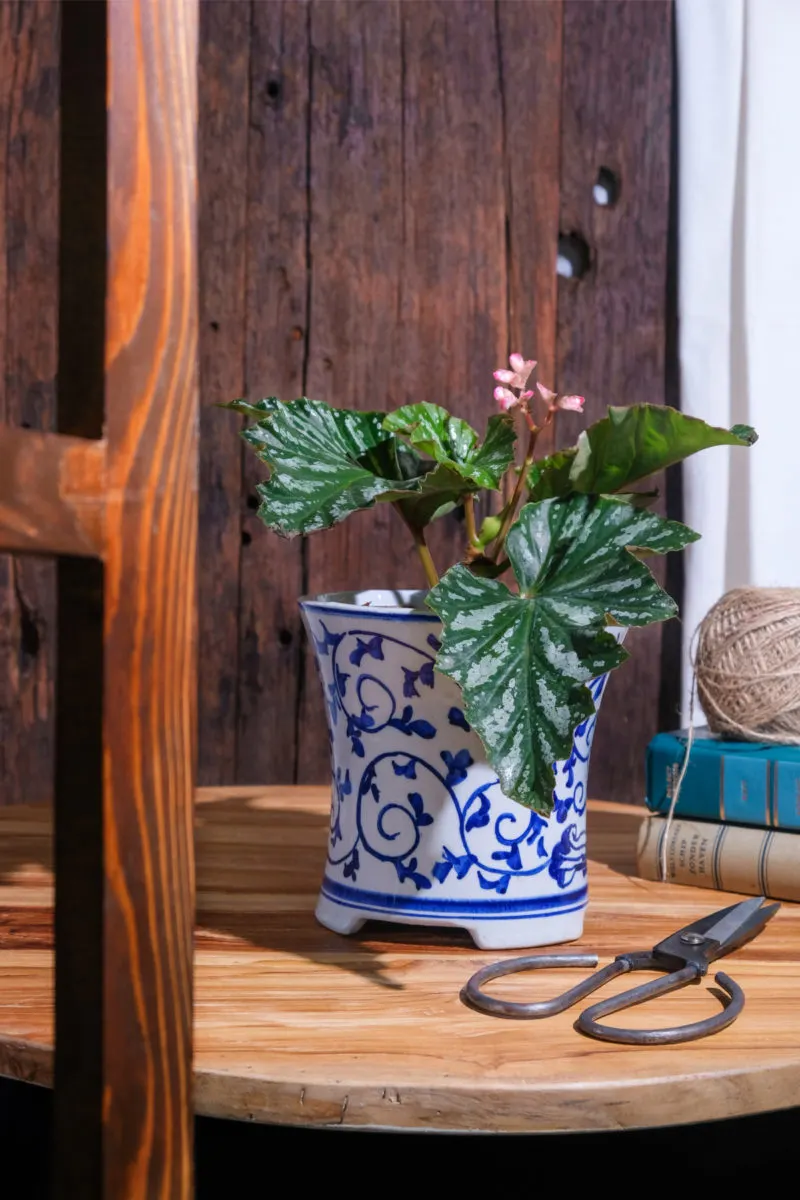
As you can see, growing begonias indoors isn’t hard, especially if you’re willing to tweak your environment a little.
Begonias are stunning houseplants that will reward you with long-lasting blooms in warm colors even in the middle of winter. For me, that makes the fuss of growing begonias as houseplants totally worth it!
